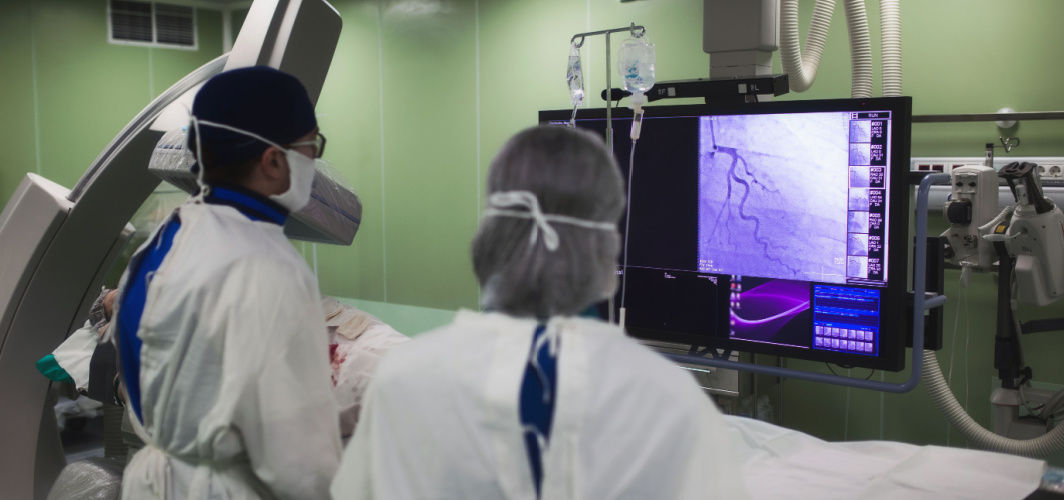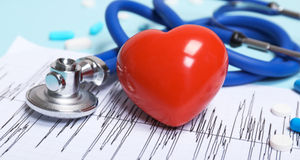Heart Conditions
High Triglyceride Levels and How It Affects the Heart
4 min read
By Apollo 24/7, Published on - 19 July 2021, Updated on - 18 October 2022
Share this article
4
16 likes

Triglycerides are a type of common fat stored in the cells and used to generate energy in times of need. Fat is essential for the human body as it serves several purposes - providing energy, protecting various organs, promoting cell growth, maintaining blood pressure, and also helping in the absorption of several vitamins. However, high triglyceride levels in the blood can increase the risk of developing various heart diseases and metabolic syndrome. Eating foods high in saturated and trans fats such as sugar, butter, red meat, baked food, etc. can increase the levels of triglycerides in the body.
Why are high levels of triglyceride considered unhealthy?
High levels of triglycerides in the blood, also known as hypertriglyceridemia, can increase the risk of pancreatitis (severe and painful inflammation of the pancreas) and cardiovascular diseases such as carotid artery disease, coronary artery disease, metabolic syndrome (characterized by high blood pressure, diabetes and obesity), peripheral artery disease (PAD), heart attack, and stroke.
Since high triglyceride levels itself may not cause any symptoms, a blood test (called lipid profile) is done to determine the levels of triglycerides in the body. The results of the test can be interpreted based on the absolute value of the triglyceride level:
- Normal: Less than 150 milligrams per deciliter (mg/dL)
- Borderline high: Between 150 and 199 mg/dL
- High: Between 200 and 499 mg/dL
- Very high: Above 500 mg/dL.
What causes high triglyceride levels?
Factors that may increase the triglyceride levels in the body include:
- Family history of high cholesterol or lipid
- Unhealthy lifestyles such as smoking, excessive consumption of alcohol, high sugar diets, and lack of physical activity
- Suffering from obesity, thyroid dysfunction, gout, or liver or kidney disease
- Uncontrolled diabetes
- Use of some medications such as diuretics, oestrogen pills, retinoids, corticosteroids and beta-blockers
- Pregnancy or menopause.
What is the difference between triglycerides, HDL and LDL?
Cholesterol in the human body comes from the food we eat and the liver. However, since the pure form of cholesterol is unable to dissolve in the blood, the liver combines it with triglycerides and lipoproteins. The lipoproteins are a type of protein that allows the movement of cholesterol-rich blood throughout the body.
The liver forms three types of lipoproteins: very-low-density lipoproteins (VLDLs), high-density lipoproteins (HDLs), and low-density lipoproteins (LDLs). While LDL and HDL carry cholesterol, VLDL carries triglycerides.
Low-density lipoproteins
LDL is also known as "bad cholesterol” as it can form plaque in the arteries (called atherosclerosis). LDL can narrow or block the arteries, increasing the risk for heart attack, stroke, and peripheral artery disease (PAD).
High-density lipoproteins
HDL is known as "good cholesterol” as it carries LDL away from the arteries, back to the liver. The liver then breaks down the bad cholesterol and passes it out of the body. High levels of HDL indicate that the cholesterol is being regulated in the body effectively.
How can triglyceride levels be reduced?
Measures that may help reduce and maintain triglyceride levels include:
- Avoid sugary beverages and baked foods such as sodas, fruit drinks, candies, cakes, pastries, and chocolates. Instead, consume drinks with low-calorie sweeteners.
- Avoid consuming foods high in saturated fat such as red meats and whole-milk dairy products. One can opt for lean meat, low-fat milk and yoghurt to the diet instead.
- Fatty fish such as salmon, mackerel, tuna, herring, and sardines can be added to the diet. Nuts and seeds (such as flaxseed, chia seeds, and walnuts) must also be included in the diet as they are rich sources of omega-3 fatty acids, a healthy fat.
- Consume whole-grain foods such as whole-wheat flour, pasta, bread, and brown rice.
- Include fibrous foods such as barley, oatmeal, beans, nuts, vegetables and fruits in the diet as they can help reduce cholesterol.
- Quit smoking completely. Doctors may recommend nicotine patches or gums to help smokers quit the habit.
- The consumption of alcohol must be limited to an occasional drink, as there is no safe drinking limit.
- Practise any moderate to high-intensity exercise such as brisk walking, riding a bicycle, and swimming, for at least half an hour every day to maintain a healthy weight.
Conclusion
Triglyceride levels must be kept under control to reduce the risk of cardiac emergencies and metabolic disorders. People who have diabetes or have any atherosclerotic disease should get their cholesterol and triglycerides tested once every 6 months. A nutritious diet, regular exercise, maintaining a healthy weight, and quitting unhealthy habits can help get the fat levels back to normal. Some people may require cholesterol-lowering medications such as statins to reduce triglyceride levels.
If you have any questions related to the heart, you can talk to a cardiologist.
Heart Conditions
Leave Comment
Recommended for you

Heart Conditions
How To Perform CPR? Here’s All You Need To Know
CPR is an emergency technique that can help save lives in cases of cardiac arrest. Keep reading to find out more about how you can make yourself useful when a situation does arise.

Heart Conditions
Warning Signs of an Imminent Heart Problem
Often, the very first sign that something is wrong with heart health is a heart attack.

Heart Conditions
Know The Difference Between Angiography And Angioplasty
Angiography and angioplasty are two of the most commonly used procedures to detect and treat heart conditions. Learn about their uses, benefits, risks and how they can help diagnose and treat cardiovascular conditions.
Subscribe
Sign up for our free Health Library Daily Newsletter
Get doctor-approved health tips, news, and more.
Visual Stories

7 Tips to Manage Hypertension
Tap to continue exploring
Recommended for you

Heart Conditions
How To Perform CPR? Here’s All You Need To Know
CPR is an emergency technique that can help save lives in cases of cardiac arrest. Keep reading to find out more about how you can make yourself useful when a situation does arise.

Heart Conditions
Warning Signs of an Imminent Heart Problem
Often, the very first sign that something is wrong with heart health is a heart attack.

Heart Conditions
Know The Difference Between Angiography And Angioplasty
Angiography and angioplasty are two of the most commonly used procedures to detect and treat heart conditions. Learn about their uses, benefits, risks and how they can help diagnose and treat cardiovascular conditions.